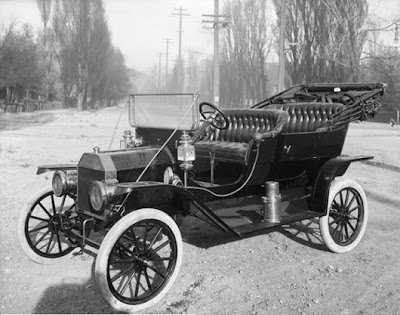Despite the fact that very few make it off the drawing board to prototype stage, ‘go anywhere’ concept cars are an ever popular subject for budding auto designers and car lovers alike. And why not - they allow us to forget about the pesky practicalities of design and tiresome economics and imagine what could be. The latest to cross our desk - the Amphibious Hybrid concept vehicle - is a case of Bond meets the Transformers with its automatically adjusting tire design that morphs to ensure maximum grip on any given terrain including ice and water, where it becomes a kind of three wheel paddle boat.
The team that designed this car thought it should be able to navigate on land, ice and water and, hence, its tires have the ability to change shape automatically to suit the terrain. For instance, when the terrain sensors located within the ‘intelligent wheels’ detect the vehicle has moved from normal mode (bitumen roads) to a slipperier surface, like snow, the tires open up a little. The more traction required, the wider the tire.
When on the water, the tires resemble something more akin to a propeller.


Intelligent wheel system
Each battery-powered wheel comprises movable parts that can increase or decrease traction according to the inbuilt terrain sensors, depending on the amount of traction required to operate safely.
Students who designed the vehicle, Janne Leppänen, Tuulia Miettinen, Roope Kolu, Tiemen Stelwagen, and Jaap Van Der Voort, were conscious of the costs of such a car and, thinking like students, have come up with a renting system for those who can’t afford vehicles like this one (if it ever comes to fruition). However, their offer of five euros a day (around USD$7) appears pretty cheap.



